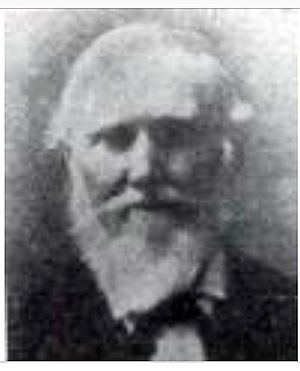Edward H. Tarrant facts for kids
Quick facts for kids
Edward H. Tarrant
|
|
|---|---|
 |
|
| Member of the Third Texas Legislature from the district |
|
| In office November 5, 1849 – November 3, 1851 |
|
| Member of the Fourth Texas Legislature from the district |
|
| In office November 3, 1851 – November 7, 1853 |
|
| Personal details | |
| Born | 1799 Bamberg County, South Carolina, U.S. |
| Died | August 2, 1858 (aged 62) Parker County, Texas, U.S. |
| Resting place | Pioneer Rest Cemetery 32°45′54″N 97°19′46″W / 32.76487°N 97.329434°W |
| Spouse | Mary Danforth |
| Occupation | Military officer, rancher/planter, & politician |
| Profession | Brigadier-general |
| Military service | |
| Allegiance | |
| Branch/service |
|
| Battles/wars |
|
Edward H. Tarrant (born 1799, died 1858) was an important figure in early Texas history. He was a military leader and a politician. He helped shape the land that would become the State of Texas.
Tarrant played a role in the development of areas like present-day Dallas. He also served in the Texas House of Representatives. Tarrant County, Texas is named after him.
What was Edward Tarrant's early life like?
Edward Tarrant was a young soldier in the War of 1812. He fought in the famous Battle of New Orleans when he was about 19. He was likely a private in the Kentucky state militia.
Later, he moved to Tennessee. There, he became a colonel in the state militia. In 1827, Tarrant was a sheriff in Henry County, Tennessee. He then moved to Mexican Texas in the early 1830s. He started a ranch in Red River County, Texas. He became a very successful landowner.
What did Edward Tarrant do in his career?
In 1837, Tarrant was chosen to represent Red River County. He served in the Texan Congress. After a few months, he left to help protect the republic. He led ranger activities to secure the frontier.
From 1838 to 1839, he was a chief justice in Red River County. He was also elected Brigadier-general. This was for a militia group in northeast Texas. This group was called the Fourth Brigade.
Tarrant was involved in many frontier conflicts. One important event was the battle of Village Creek in May 1841. This battle took place near where Fort Worth, Texas is today.
In 1843, Tarrant helped negotiate an important agreement. He worked with George W. Terrell. They created the Treaty of Bird's Fort with nine Native American tribes. This treaty aimed to establish peace.
Tarrant also served as a politician. He was a member of the state House of Representatives. He served two terms, from 1849 to 1853. In 1851, he married Mary Danforth. They lived near Italy, Texas, in Ellis County, Texas.
In 1857, Tarrant moved some of his family to Fort Belknap (Texas). This fort was in what is now Young County, Texas. He led a group to help protect settlers there. This was during a time of frequent conflicts with Native American groups.
When did Edward Tarrant die?
In 1857, General Tarrant began moving his home to Fort Belknap. During one of his trips, he became sick. He passed away on August 2, 1858. This happened at the home of William Fondren in Parker County, Texas.
He was first buried in the Fondren family cemetery. Later, on January 28, 1859, his remains were moved. He was reburied on his family farm in Ellis County, Texas.
His final resting place is Pioneers Rest cemetery. This cemetery is in Fort Worth, Texas. His remains were moved there on March 3, 1928. Fort Worth is the main city of Tarrant County, Texas, which is named after him. His wife, Mary, later married James Emerson Hawkins.

